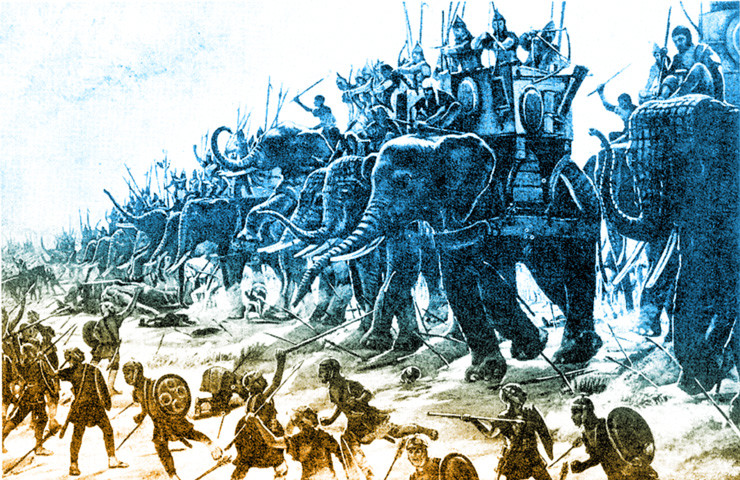Fantasy wargamers are fascinated by race. From Warhammer to Warcraft to the all the major conflicts in The Lord of the Rings, race, and the racial composition of armies, is almost always the pivot point. In any fantasy wargame, the question, “Who do you play?” is always answered by race. “I play Dwarves,” or “I play Orcs,” or “I play Eldar.” Each race has its own Order-of-Battle, its own advantages and disadvantages. Dwarves are typically known for their ability to “tank,” soaking up and delivering damage in close quarters. They’re slow and plodding, but usually well armored. Elves are fast and agile, great archers, effective at a distance but unable to stick in a stand-up fight. Humans tend to do well all-around, generalists who provide balance to a battlefield.
Perhaps the most famous fantasy battle of all time, Tolkien’s Battle of Five Armies in The Hobbit, also pivots around race. It was fought between the Orcs, Eagles, Men of Dale, Wood Elves (note the sub-category there, races within races) and Dwarves. This doesn’t even account for the Wargs and Giant Bats that participated. There was even a Werebear if you count Beorn.
Ridiculous, right? Total fantasy. What a hoot!
Uh, not really, actually.
Tolkien’s treatment of race has its critics (see Saladin Ahmed’s explosive April, 2012 piece in Salon) but it’s important to remember that he was a linguist and historian long before he was a fantasist, and he drew deeply from the well of folklore and legend that has its roots in history. In a time when the world struggles to become more inclusive, and when the fantasy community in particular is working overtime to embrace real diversity, there are plenty of historical examples to draw upon. Fantasy wargames match race to capability, so let’s look at one of the greatest real armies of all time to see diversity at work in real life.
The Punic Wars
The great empires of Rome and Carthage fought a series of three major wars over more than a century. In the end Rome won, and as a result, I probably don’t need to tell you about them. But fewer people know that the Carthaginians were an African seafaring merchant empire with its capital in modern day Tunisia. For two decades, they occupied and dominated Europe, including modern day Spain, France and Italy. They produced the mighty Hannibal Barca, arguably one of the greatest generals in the history of warfare.
I want to note the role of women. Ancient historians don’t mention women much, and certainly don’t mention them as warriors. But the truth is far more complex. We catch glimpses of women fighting in ancient battles. We have Boudicea defying the Romans in ancient Britain, and Fulvia as one of the major belligerents in a Roman civil war. Women were always there, and always fighting (see Kameron Hurley’s amazing essay “We Have Always Fought”). The truth is that very, very little is known about ancient warfare, and male historians often discounted or ignored the military contributions of women. It would not surprise me to see Celtic or Scythian fighting women in the ranks of either army.
There’s a lot to discuss about the Punic Wars and their impact on world history, but here I want to focus, gamer-style, on the diversity of the troop types.
Diversity in the Carthaginian Army
Hannibal’s troops were polyglot and multiracial, drawn from all over the world. Like the Dwarves, Elves and Orcs of our fantasy wargaming table, each brought a different capability to the battlefield. Here they are, laid out gamer-style:
The Heavies – African Infantry
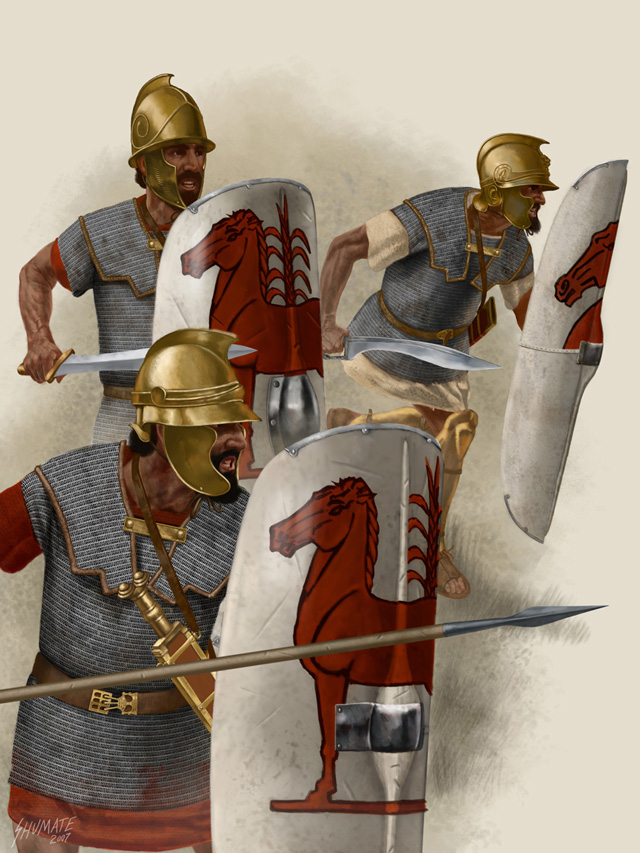
Hannibal’s core infantry were heavily armed and armored Carthaginians who fought in closely disciplined ranks. They were trained in the Greek style, using huge round shields and long spears to present a solid wall of death to the enemy, a line of iron and bronze. They were Africans all, drawn mostly from modern-day Tunisia, Libya and Algeria.
The Swarm of Hornets – Numidian Light Cavalry
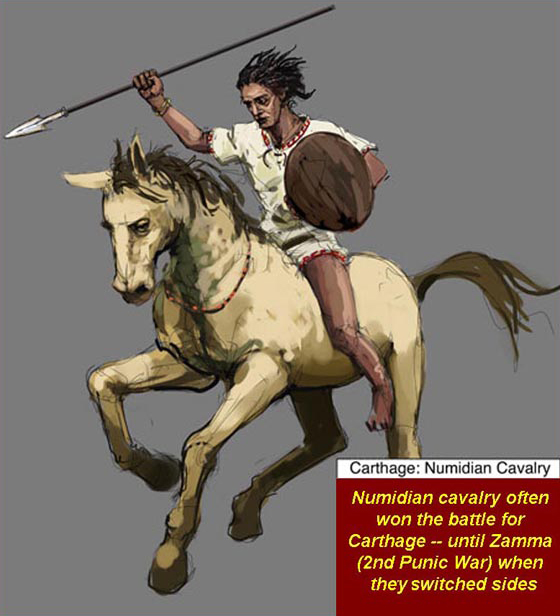
Hannibal drew heavily on the client kingdom of Numidia, in what is today Algeria and Morocco. Riding without saddles, bridles or stirrups, the Numidians were world-famous for their hit and run tactics, swarming around the enemy like a cloud of hornets. They were incredibly accurate with thrown javelins, and their only protection was a small round shield. They’d dash in, throw their javelins and then ride away as soon as anyone tried to engage them. The moment they thought the enemy was exhausted or had turned their backs (to run, for example), they would charge in and ride them down.
The Shock Troops
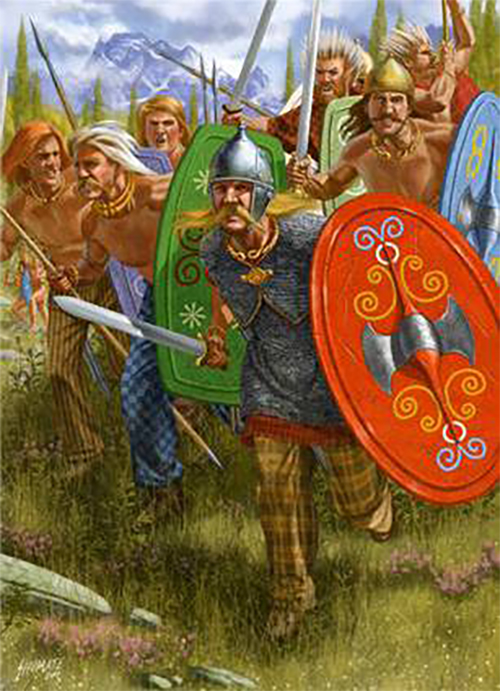
Called “the Gauls” by the Romans, these wild warriors came from modern day Spain, France, Italy, eastern Europe and even as far away as Britain. They were known to be wild and ferocious, but ill-disciplined. Only the richest of them had any armor, and many fought completely naked. They grew their hair long and often spiked it by washing it in lime-water. They would charge the enemy with ferocious war-cries, laying about with spears and (for the nobles) long slashing swords. They frequently lost heart if their initial charge was blunted, and it was hard to get them to move as part of a military formation or hold a defensive line.
The All-Arounders
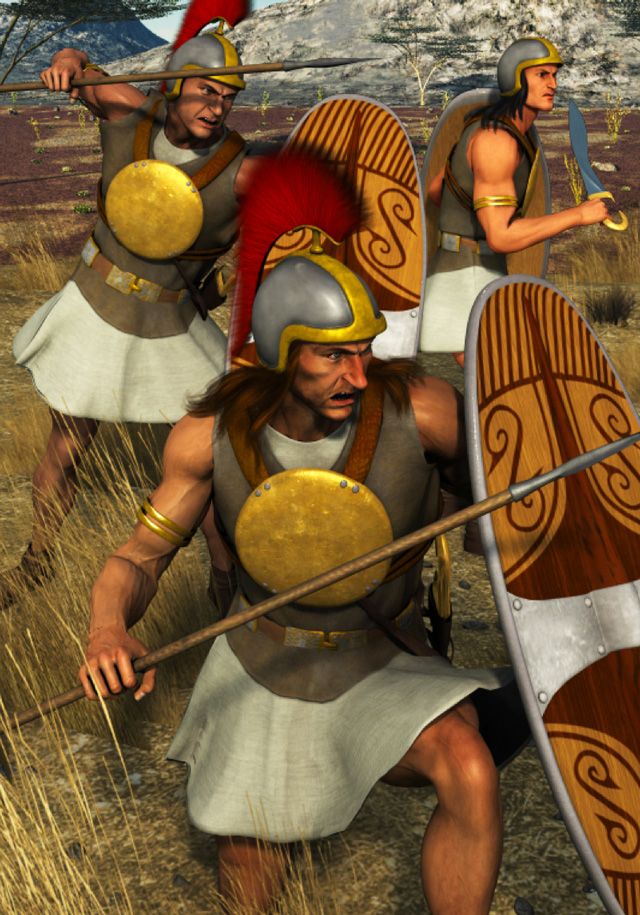
The Iberian tribesmen hailed from modern-day Spain, and provided a balanced medium to light infantry and cavalry force to Hannibal’s army. They usually wore little armor, and were famed for their stiff, crested hoods made of animal sinew. They are perhaps most famous for their scutarii, sword and shield fighters, and for their jinettes, a type of light cavalry that fought much like the Numidians by throwing javelins from horseback. The jinette style of fighting cavalry persisted all the way into the renaissance, and we hear about them in battles as late as the 1490s AD. The Balearic Islands off the coast of Spain also yielded famous units of slingers. Bred to use reed and animal sinew slings from their childhood, they were deadly accurate and often carried many slings of different lengths for different ranges. The spares were tied around their heads.
Traitors to Rome

At the time of Cannae, the Romans didn’t dominate all of Italy. Most of the other cities outside Rome were colonia, Greek colonies that had grown into independent city-states which were later subjugated by Rome. Many of these were client-states to Rome, and when they saw Hannibal winning, they quickly switched sides and went to war for Carthage. Their troops were diverse and multi-faceted, with heavy and light cavalry, Greek style phalanx infantry and lighter auxiliary infantry.
Opportunists and Adventurers
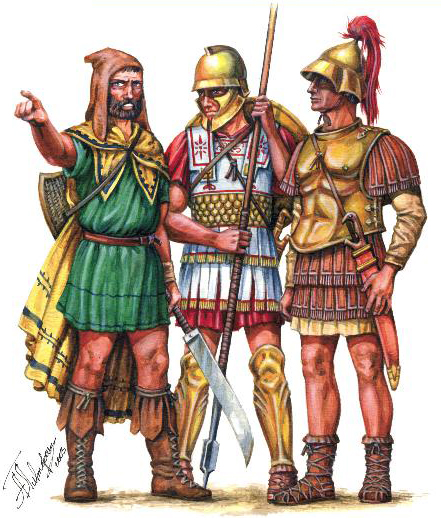
From modern-day Greece, Macedonia and Albania. These troops were the traditional Greek hoplites (think 300), fighting in close-order while wearing bronze helmets and linen corselets and carrying spears and shields. The Macedonians sometimes used enormous pikes held in both hands. They functioned as heavy infantry, same as the Africans, but were usually mercenaries, as opposed to citizens of Carthage.
Ancient Tanks
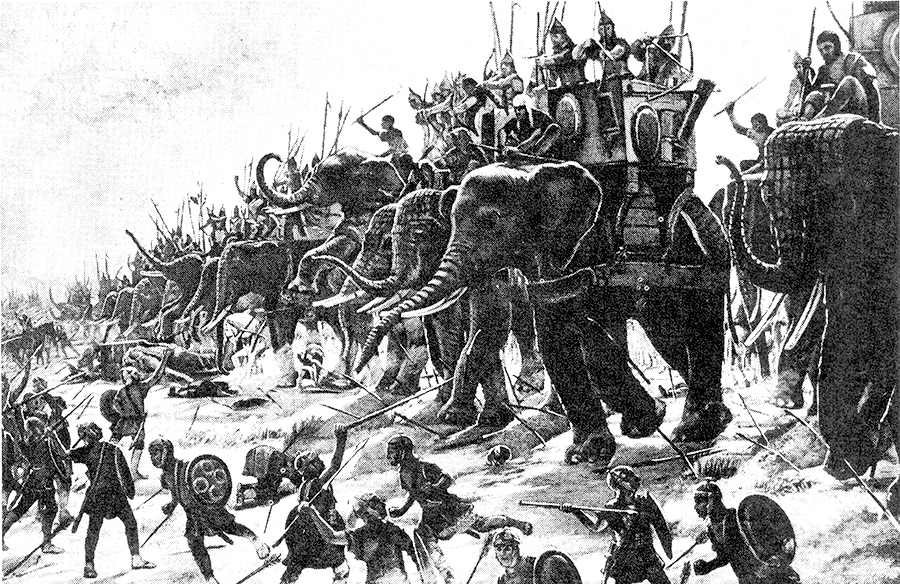
Like the Mûmakil from the Battle of Pelennor Fields, Hannibal used elephants in his army. The Carthaginians used mostly the now extinct North African Elephant, which were only around 8 feet tall, and too small to carry the elaborate towers we saw in The Return of the King. Still, they were terrifying to troops who had never fought them before, and every bit as unreliable as Mûmakil, just as likely to stampede into their own troops as they were to attack the enemy. It didn’t take the Romans long to figure out that if you just shot elephants with enough javelins, arrows and sling stones, they would go mad and rampage through their own lines.
And this is just one army in the vast ancient world! Hannibal understood the importance of what modern tacticians call “combined arms,” the understanding that different types of troops bring different capabilities to the battlefield. For Hannibal, the secret was in leveraging the strengths of each of the populations across the vast and incredibly diverse Carthaginian empire. This is only barely touching on the variety in the training, equipment and origins of these troops. Much more can be found in the few ancient writers whose works have survived. See for yourself in the writings of Polybius, Livy and Plutarch.
When you sit down to build your army of Tyrranids, or Gray Elves, or debate the strengths and weaknesses of White Hand Uruk-Hai versus Red Eye Orcs out of Barad-Dur, it’s not so far fetched after all.
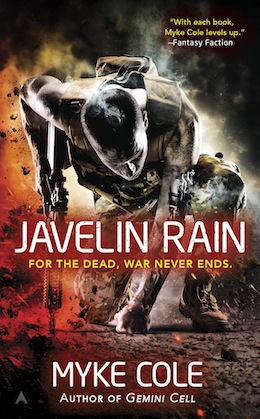 Myke Cole is the author of the military fantasy Shadow Ops series. His latest novel, Javelin Rain, will be published by Ace/Roc on March 29th. As a security contractor, government civilian and military officer, Myke Cole’s career has run the gamut from Counterterrorism to Cyber Warfare to Federal Law Enforcement. He’s done three tours in Iraq and was recalled to serve during the Deepwater Horizon oil spill. He’s also a huge history nerd and tabletop wargamer. You can often find him simulating ancient battles in 1/72 scale at the Metropolitan Wargamers Society in Park Slope.
Myke Cole is the author of the military fantasy Shadow Ops series. His latest novel, Javelin Rain, will be published by Ace/Roc on March 29th. As a security contractor, government civilian and military officer, Myke Cole’s career has run the gamut from Counterterrorism to Cyber Warfare to Federal Law Enforcement. He’s done three tours in Iraq and was recalled to serve during the Deepwater Horizon oil spill. He’s also a huge history nerd and tabletop wargamer. You can often find him simulating ancient battles in 1/72 scale at the Metropolitan Wargamers Society in Park Slope.










